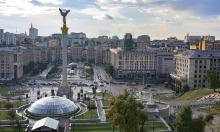Brazil to become another center of world immigration
 Today, Brazil can boast of being the seventh largest economy in the world and the largest economy in Latin America. In 2010, the GDP of this country made up 3.7 trillion reals ($2.1 trillion). This year, after two decades of the export of labor force, Brazil has become the country of immigration, which attracts European and Chinese nationals, not to mention Hispanic nationalities. What is more, many Brazilians, who left the country for earnings in Europe and America years ago, have started to return to their motherland.
Today, Brazil can boast of being the seventh largest economy in the world and the largest economy in Latin America. In 2010, the GDP of this country made up 3.7 trillion reals ($2.1 trillion). This year, after two decades of the export of labor force, Brazil has become the country of immigration, which attracts European and Chinese nationals, not to mention Hispanic nationalities. What is more, many Brazilians, who left the country for earnings in Europe and America years ago, have started to return to their motherland.
For the first time in 20 years, the number of foreigners, who entered Brazil to work, to study or to live with their relatives, have exceeded the number of Brazilians, who left the country for similar reasons. According to the Brazilian Ministry for Justice, the number of foreigners, who reside in the country legally, has increased by 52 percent and continues to grow. From 2009 to 2010, the issue of permanent residence visas has increased by 67 percent.
The growth in the number of illegal immigrants made up as many as 600,000 people during the same period of time. Their total amount reached 2 million people. As many as 4 million Brazilians were living outside Brazil in 2005. Two million of them have already returned to their native land.
The Brazilian economy has been growing during the recent years against the background of the ongoing crisis in the USA, Europe and Japan. The Portuguese make the largest group of legal migrants in Brazil today. The list continues with natives of Bolivia, Paraguay and China. The Bolivians make the largest group of illegal migrants - 40 percent (according to the amnesty in 2009).
Brazil became an attractive market for qualified foreign labor force According to the Brazilian Ministry for Labor, the number of foreigners holding work visas made up 26,545 people in the first half of 2011. The index marked a 20-percent increase as compared to the same period of 2010.
The process may continue to develop in connection with the growth of unemployment in the developed countries. It is foreign investors (China, Korea, Japan) that create the demand. They invest in the Brazilian industry and attract their country-fellows to live and work in Brazil.
One of Brazil's biggest problems is the poor quality of education, especially when it comes to technology-intensive professions. Experts say that the lack of qualified personnel in the field of telecommunications and informational technologies (programmers and system analysts - approximately 2 million people) may slow down the further development of the country.
That is why the country is ready to annually welcome nearly 20,000 engineers in the field of geological exploration, road building, the construction of seaports and airports. Hotel managers, programmers, communication specialists, medical specialists, architects, biologists and engineers of other specialities are also in demand in today's Brazil.
Foreign specialists presumably come to Rio de Janeiro and Sao Paolo. The growth of foreign labor was also registered in the north-east and in the midwest of the country (by 134 and 48 percent respectively). The north-east of Brazil attracts foreign investments in the realization of projects in the field of petrochemistry, ship-building, steel-casting and mining industries.
As for illegal immigration, it presumably consists of non-qualified personnel working in the fields of construction and public utilities. According to the data of the latest amnesty in 2009, the majority of 45,000 legal immigrants arrived in Brazil on tourist visas. During the first stage of the amnesty, they received two-year residence permits. To be able to stay in Brazil permanently, the people will have to provide six-month employment certificates from their employers. According to experts' estimates, only a half of illegal aliens will become legal residents of Brazil by the end of the year.
One may become a legal Brazilian resident by opening their own business. To be able to do that, one will have to have a bank account with $50,000 on it. In this case, residence permits will be issued without any problems. Unlike in the USA, any person aged below 50 and having a monthly income that starts from $2,000 may immigrate to Brazil and take two relatives along. The immigrant would have to provide the income of $1,000 for the relatives.
Brazil can not compete with the largest centers of world immigration - the USA, China and Canada, of course. As many as 56,000 work visas, which were issued in Brazil in 2010, are equivalent to one-tenth of the number of work visas issued over the same period of time in the USA and to a quarter of visas issued in Canada and China.
The trend is obvious, though. Only eight million people submitted applications this year to take part in the lottery in which winners receive residence and work permits in the United States. Last year, the number of submissions was much larger - 15 million. Brazil undoubtedly offers wide opportunities for employment and business, some of which are connected with world's largest sports projects, such as the World Cup in 2014 and the Olympic Games in 2016.
Lubov Lulko
Pravda.Ru
Subscribe to Pravda.Ru Telegram channel, Facebook, RSS!





